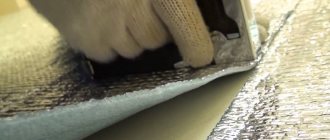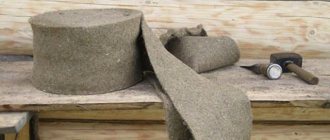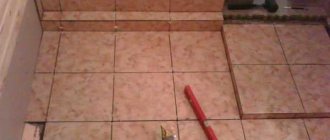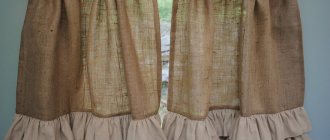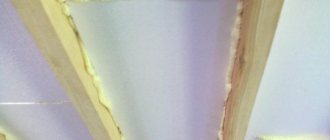Polyethylene is inert to most substances. This is a positive characteristic, but not for the moment if you need to stick it to the surface. You need to buy a special glue for polyethylene, only it will cope with the task. Many people use universal adhesives, but they will not provide full adhesion.
Liquid Nails
To attach polyethylene foam (penofol) to various surfaces, it is necessary to use special glue. Weicon Easy-Mix, Ceresit and Olfix are best suited.
For gluing foam and polystyrene boards, the same adhesive should be used, depending on the conditions. You can use the mounting one.
Penoplex material is currently very popular for home insulation. And its installation requires the use of a special glue, the choice of which.
During repairs when using plastic materials such as corners, it is impossible without knowledge of how to choose the glue for it.
Gluing mirrors at home to various surfaces, such as a wall or cabinet door, is done using glue
To get rid of leaks between the bathtub and the wall, you should stick a border. Previously, cement mixture and oil paint were used for this.
The process of gluing PVC panels in the bathroom is quite simple. But you need to know the principle of selecting glue and the installation sequence
How can parts made from these materials be glued together?
Polypropylene parts or sheets are difficult to glue together. The reason for this is that the surface is too smooth, preventing good adhesion. Special compositions for these polymers have not yet been invented, so you have to choose the most suitable adhesive from those already available.
There are two types of adhesive materials:
- single-component ones are sold ready-made (for example, “Moment” adhesive-sealant);
- two-component ones are a kit consisting of a base and a hardener, which must be mixed before work (for example, epoxy glue with a hardener or “Plasticfix”).
All adhesive compositions can be divided into three groups:
- cold cure (harden at room temperature);
- thermosetting (heating is required for their polymerization);
- mixed (polymerizes with and without heating).
Adhesive mixtures contain substances that dissolve the polymer and improve adhesion of the additive. The volatile solvent evaporates quickly, causing hardening at the joint. The parts form a single whole, which is why this process is often called cold welding.
Which glue to choose for polyethylene: tips and reviews
Polyethylene is one of the most popular and widely known materials. Not too expensive and, in general, unpretentious. Polyethylene is quite often used in the construction of greenhouses and greenhouses, for insulation and moisture insulation of various objects. At the time of work, many craftsmen are faced with the need to glue this material. This is where the problems begin. The fact is that polyethylene is difficult to join. But you can still fasten it with glue. This can also be done under high temperature. How to choose a suitable adhesive for polyethylene and what should you pay attention to when carrying out work? Answers to these and other questions can be found below.
Properties of polyethylene
This wonderful material has many interesting properties. Polyethylene is used to protect against moisture, is an excellent electrical insulator and is capable of absorbing one of the most dangerous types of radiation. It is almost completely resistant to chemicals. It is this last quality that sometimes turns from an advantage into a disadvantage. How to fasten such material and how to choose glue for polyethylene?
Interestingly, gluing is not only a chemical, but to some extent an electrical process. The molecules of the substances being connected are attracted to each other due to the difference in their charges. Therefore, it is quite difficult to find a substance that adheres well to polyethylene, and after drying, firmly holds the fastened parts together. Since the molecules of this material are quite “balanced”, it can be very difficult to glue it with other elements. But still, the chemical industry has created an adhesive for gluing polyethylene. And not alone. Such an adhesive must have certain properties. Let's look at which ones exactly.
Requirements for adhesive material
If you decide to glue polyethylene or phenol foam (its foamed version) to a concrete or brick surface, then the fastening adhesive layer must have a number of properties:
- Remain resistant to weather conditions.
- Do not destroy the materials being fastened.
- Possess a high degree of hygroscopicity and adhesion.
- Be resistant to temperature changes.
- Have antiseptic and fungistatic qualities.
- Maintain its properties for a long time.
Consumer reviews indicate that it is also worth paying attention to the environmental safety of the adhesive. This is especially important when using materials for interior decoration. And if you decide to use polyethylene (penophenol) when arranging a sauna or bathhouse, you need to pay additional attention to the heat resistance of the glue and its resistance to hot water vapor.
Video on the topic
How to choose glue?
If you don't know which polyethylene adhesive is right for you, ask the seller to look for one that contains methyl acrylate. This substance ensures rapid softening of polyethylene and its high-quality gluing. The product may also contain chromic anhydride, various acids and xylene. The undeniable advantage of this glue is that when using it you do not need additional surface treatment. But users claim that it also has a drawback. This glue for polyethylene is very toxic. Therefore, it is better to carry out all work outdoors. Well, or you will have to at least ensure high-quality ventilation of the room. The glue “works best” at a temperature of +35˚C. It is not afraid of moisture, but it ignites easily.
How to glue at home
If there is a need to glue polyethylene at home, then you need to use IZ products. The gluing process depends on what base the film is attached to.
Interesting video on the topic:
Between themselves
The polyethylene film will stick to each other BF-2. But before work you need to prepare:
- The surface is thoroughly cleaned of dirt, dust deposits, and degreased.
- Apply a layer of adhesive, distribute evenly, connect the surfaces.
- Press for a couple of hours until the mass sets.
This preparation is suitable for all types of connecting compounds.
Glue - toxic compounds, work is performed with gloves.
In addition to glue, double-sided tape, soldering the ends between two metal plates, or molten plastic will help to glue the film.
To metal
In order for the polyethylene to tightly and reliably cover the metal surface, you need to do the following:
- the metal plane is cleaned and degreased;
- warms up to 120–150 degrees;
- the film is carefully stretched, gradually applied to a metal plane, and rolled.
To concrete
It is not difficult to stick insulation to concrete, the main thing is to follow the rules:
- the concrete surface is cleaned, leveled, primed;
- glue is applied to the side of the insulation where there is no foil;
- wait a minute for the glue to soak in;
- apply cloth, press;
- the edges are additionally coated and fixed;
- wait until it dries completely.
We insulate the home
Since it’s quite cold outside, it’s important to provide your home with heat. As practice shows, the use of additional heating sections is not effective enough. The best option for this case is wall insulation. To carry it out, different materials, technologies, etc. are used. All this allows you to make the room warm and cozy at any time of the year. Moreover, it is excellent for both apartments and private houses.
Wall insulation is carried out in several ways. It can be done both on the outside of the wall, that is, from the street, and on the inside. The second option is used quite often today. And this is not surprising. After all, it consists in using a special cover for wallpaper. It is attached to the wall with glue. As a result, the walls turn out beautiful and well-groomed, providing comfort and coziness in the room.
How to solder film
In addition to the popular brands BF-2 or BF-4, sometimes 80% acetic acid is used to implement the plan. Do not forget about the pre-treatment of two planes with chromic anhydride with an indicator on the package of 25%.
For fixing polyamide film, a specialized composition PK-5 is often purchased, but with this approach to the process without ironing with a heated iron, it will be difficult to obtain a reliable seam. One bottle of solution of 50 ml should be enough for a joint of 15-20 meters, if you take a serious approach to manipulation technology.
When choosing super glue, you also need to be careful and follow precautions, as with all other types of compounds. Such cutting-edge products can be useful in repairing polymer canvas; to do this, it is enough to apply a thin layer of the product and apply a patch, pre-cut to size.
To use the product, you should wait 2 hours, which is considered an excellent result; old samples of the material are no less productive and reliably connected, but it is better to work outside only in sunny weather.
Foamed polyethylene: material features
This material can also be found under another name. For example: polyfol, isolon, etc. But they all characterize one substrate. It differs from others in its low thermal conductivity, since the structure is porous and light. At the same time, it can be used in rooms with temperature changes. Tolerates heat well.
Such material can replace a wall that is laid out in half brick. It goes well with materials whose thermal insulation properties are of poor quality. This substrate can be laid on a concrete wall. As you know, it freezes very well at low temperatures. As a result, its thermal insulation properties will improve significantly. This way, living conditions in the apartment will be as comfortable as possible.
Joining polyethylene by welding
The most reliable seam can be obtained by properly welding this material. What complicates the welding process? The next nuance that must be taken into account: polyethylene is molded hot and under high pressure, reaching hundreds of kg per square centimeter. When welding, it is heated again under normal atmospheric pressure until it melts, and then it shrinks somewhat, complicating the work of the welder. Based on the type of object being welded, a distinction is made between film welding and welding of products made of thick polyethylene - cans, pipes, etc.
Thin polyethylene film is welded using a special apparatus or preheated improvised devices. In the machine, the film is glued together as follows: its joined layers are pulled along a wedge heated to a certain temperature, and then pressed against each other with a pair of special rollers. Proper selection of the degree of heating and pressure of the rollers ensures a tight and reliable connection.
Installation of foamed polyethylene: requirements for glue
Installation of this material is carried out by gluing. In this case, the usual mixture will not work; a special one is needed. But before choosing it, it is worth determining the type of surface on which the polyethylene foam will be attached.
The glue must meet a number of requirements. Firstly, it is highly water resistant. Secondly, ensuring a strong connection with the base, without leading to its destruction. Its resistance to adverse environmental factors is also important.
In addition, it must withstand temperature changes, be safe for human health, antibacterial, and have a long service life. In this case, the properties must remain unchanged. If you use high-quality glue, the fastening of this material will be reliable and durable. As a result, it will provide warmth and comfort in the house. Its service life is long and of high quality.
Useful tips
Recommendations from specialists will help to glue polyethylene together efficiently, firmly and reliably, so that the products will serve for a long time:
- If very high demands are placed on the strength of the seam being formed, then the optimal method for gluing polyethylene is welding. The seam will be strong if it is not allowed to cool suddenly.
- Before using filled acrylate adhesive, no mechanical preparation of the surface is required. With the exception of degreasing and cleaning, which are carried out before gluing any surfaces.
- The seam formed after gluing the film with acrylate glue should be kept at a temperature from +15 to +70˚ C for 4-5 hours.
- Epoxy glue is difficult to work with, and the bond strength is not very good.
Tip You can create your own recipe for polyethylene glue by adding a little crushed chalk or cement to the acrylate glue. The composition can be of high quality and at the same time inexpensive.
The best option for gluing polyethylene is welding, since the result is a strong, reliable seam. It is not always advisable to use adhesive compositions, this is explained by the fact that polyethylene is a chemically inert material with weak adhesive properties.
Features of the glue composition
Special requirements are imposed on the glue not only in terms of properties, but also in composition. Since they directly affect how well the substrate adheres to the base. A mandatory component for this glue is the presence of a solvent. But it differs depending on what surface the penofol is glued to.
Adhesive for polyethylene foam
If it is used in arranging a bathhouse or sauna, the glue must be heat-resistant. At the same time, there is something that unites all mixtures. They must have a safety certificate, which is permission for use in residential premises.
Polyethylene and polypropylene: properties, similarities and differences
Polyethylene and polypropylene are polymer materials made from hydrocarbon raw materials. Polypropylene is one of the most common types of plastics. It is used to make opaque packaging for products, bottle caps, parts for cars and other mechanisms. In construction it is used for cladding, thermal insulation and protection of communications.
Polyethylene is used to make transparent packaging, packaging and agricultural films, insulation for electrical cables, automobile fuel tanks, toys, and household items. In construction it is used to protect concrete structures and communications from moisture, as well as for the manufacture of pipes.
Polyethylene pipes
Similarities:
- thermoplasticity (when heated, both materials become soft and can be given any shape);
- level of strength (equally resistant to impacts and stretching);
- electrical insulation (do not conduct electric current);
- low water and gas permeability;
- chemical inertness (do not interact with acids and alkalis);
- dissolves in gasoline and other organic solvents.
Differences:
- polypropylene is lighter than polyethylene;
- polypropylene synthesis requires low pressure and a catalyst;
- the melting point of polypropylene is above 180°C versus 140°C;
- polyethylene is more frost-resistant;
- polypropylene is dense and fragile, polyethylene is elastic.
How to glue: preparatory work
After the material for wall insulation has been selected and the quantity required has been calculated, the question arises of how to glue foam wallpaper. This work is not difficult. It consists of several interconnected stages.
The first thing you need to start with is to prepare the surface, which will ensure uniform and monolithic gluing. To do this, the surface is leveled, its flaws are eliminated, cracks must be covered, chips must be removed. After which the base is primed. This will ensure better adhesion. If there are metal elements in concrete, they are treated with special means that prevent their corrosion. Next comes cleaning the surface from dirt and dust.
Review of popular solutions
To fix foam plastic, universal means, one-component substances, mineral mixtures, and polymer glues are used, the list of which is constantly growing.
Weicon Easy-Mix-PE-PP 45
The product, which contains methyl methacrylate, is produced in the form of a yellowish paste that becomes transparent after hardening. The two-component adhesive has high adhesion, can withstand -50, hardens completely in 6 hours, and is used for joining:
- fiberglass;
- polycarbonate:
- polyvinyl chloride.
Before applying the composition, the surface does not require preliminary preparation. The peel strength of the adhesive is 2.9 N/mm.
"Titanium"
Titan Wild has been used in construction and renovation work to connect different surfaces since the 90s. Cyanoacrylate glue is applied in a layer less than 4 mm thick; the composition is effective even at very high temperatures. The hardened seam does not delaminate under heavy load. The consistency of the product resembles polyurethane foam, but does not shrink. The glue dries in 60 minutes and is applied in 2 layers. After drying, the seam is not destroyed by ultraviolet rays and does not absorb moisture.
Atlas Stopter K-20
The mineral mixture is used for gluing insulating polystyrene foam boards when insulating buildings, as well as for creating a reinforcing layer. Microscopic fibers present in the glue give it resistance to cracking, high adhesion, and elasticity. The building mixture connects the panels to plastered walls, brick, and aerated concrete.
"T-vanguard"
The adhesive, consisting of a polymer and filler, is available in the form of a dry mixture, suitable for attaching polystyrene boards to the facade of a building and indoors. "T-avant-garde" is packaged in paper bags of 25 kg, applied:
- on concrete;
- brick;
- plaster.
The surface to which the panels are attached is degreased and leveled in advance. The mixture is combined with cold water and consumed in half an hour.
"Akrol"
The adhesive, which contains additives that increase adhesion, ensures a strong connection of the insulating board to glass, metals, and concrete, even at high temperatures and humidity. Akrol glue seals small cracks, masks unevenness, is applied to a dry surface in a continuous layer, and pressed against the base. The glue does not need to be diluted, since it is packaged into parts and ready for use.
See also
Description of liquid patch glue and how to use it correctly
"Neoprene-2136"
In order for foamed polyethylene to perform the functions of insulation and insulating material, it can be secured to a wall that has been cleaned and treated with an antiseptic solution using Neoprene-2136 spray. The adhesive is made on the basis of rubber, contains additives and fillers in the form of silicon dioxide and calcium silicate, and provides adhesion in a quarter of an hour. The compound is resistant to the action of acetone, alcohol, and aliphatic hydrocarbons.
"Ceresit"
Construction adhesive with high adhesion allows you to attach polystyrene boards and ceramics even to surfaces subject to shrinkage.
The product, produced by Henkel, fills the seams and reliably adheres the insulating material to the surface.
Several types of Ceresit glue are used for connecting slabs inside and outside a building, which is valued for its characteristics, which differ in:
- resistance to sub-zero temperatures;
- water-repellent property;
- high adhesion;
- ease of care.
The Ceresit line contains cement, which upon contact with liquid enters into an alkaline reaction. When working with glue, you need to protect your skin so as not to cause irritation.
"Olfix"
The product produced by Knayf is suitable for gluing mineral wool and expanded polystyrene panels to plaster and brick walls with an uneven surface. The glue, made from gypsum and additives, is poured with cold water and applied in portions in the center and along the sheet. The glued board is pressed against the base and aligned in one plane.
Penoplex Fastfix
To fix extruded polystyrene foam panels, foam adhesive based on plastic polyurethane is used. Penoplex dries in 10 minutes, hardens in a day, is suitable for external work, internal thermal insulation, and provides adhesion to plaster, expanded clay concrete, building stone, and wood.
Insta-stick
The polyurethane-based product firmly secures foam foam boards to horizontal and vertical surfaces of brick, metal, and concrete. Insta-stick glue is economical in consumption, is not afraid of frost, and does not contain harmful substances. During commit:
- Doesn't splash.
- Does not leave any dirt.
- Doesn't gather dust.
The supply of the composition is regulated by pressing the valve. The glue is applied in strips, and after foaming it hardens in an hour or two.
"Moment"
In everyday life, construction and repair, a Russian-German product has been used for many years, which is constantly being improved and replenished with new varieties. Moment glue firmly and quickly secures ceiling skirting boards, foam tiles, parquet, and polypropylene products. The two-component composition reliably fixes materials that are exposed to steam, water, and vibration.
See also
How and what is the best way to seal an air mattress at home correctly
BF-2
The viscous alcohol solution, which contains phenol-formaldehyde resins and vinyl acetate polymer, developed in the Soviet Union after the war, does not corrode, does not rot, and does not deform when heated. BF-2 glues metal, plastic, polystyrene foam, ceramics using the cold and hot method. The thickened composition is diluted with alcohol. When fixing in room conditions, the product is applied in 2 thin layers, in a drying cabinet - in one.
BF-4
Butyral-phenolic glue connects metal surfaces, textile fabrics, leather, glass, wood. The durable seam is not dissolved by gasoline and is not afraid of moisture. BF-4 ideally fastens products subject to bending and impact. With the hot method, the parts are glued together in 40 minutes. With the cold method, the composition is applied in 2 layers with an interval of half an hour.
Features of penofol fastening
Penofol (isolon) is produced by special foaming of polyethylene. The insulation is covered with aluminum foil, which maximizes heat retention. It is used for internal and external work, in finishing production mechanisms, preserving heat in pipelines or air conditioning systems. It comes in rolls and individual plates. It may have additional characteristics – thickness, color. The bonding of foil to the plane of foamed polyethylene can be chemical or physical (cross-linked).
- small thickness;
- environmentally friendly;
- does not require additional skin and respiratory protection;
- there is no need for special tools;
- ease of fastening.
Glue is used for penofol with foil on one side.
Double-sided insulation is used for thermal insulation of loggias, garages, and pipes. They are attached to the sheathing or purchased polyethylene foam with a self-adhesive surface.
Types of glue and their manufacturers
The vast majority of adhesive compositions practically do not stick to polyethylene, simply being squeezed out from the area where the surfaces come into contact. But there are still materials that can cope with such a difficult task.
The most popular types of glue that can be used for polyethylene are:
- BF-2, BF-4;
- two-component acrylate;
- epoxy.
Butyraphenol glue (abbreviated as BF) is produced in Russia, manufactured by Petrokhim CJSC in St. Petersburg. The glue is a viscous, thick liquid of brown or reddish-brown color and does not rot or corrode.
BF-2 is suitable for gluing metal, plastic, ceramics and wood, and is used for restoration work. Glue cannot be used for dishes, as it contains toxic aldehydes and phenol. BF-2 is universal, chemically inert and moisture resistant.
BF-4 is practically no different from BF-2 in terms of chemical resistance, but its scope of application is slightly different. BF-4 is usually used for gluing elastic materials that are subject to vibration and bending. For example, leather, wood, plexiglass, textolite, metals and alloys.
Two-component acrylate adhesive V-Strong GELIAHAO 302 is characterized by increased strength, it is transparent and does not harden very quickly (in 4 minutes), which allows you not to rush too much when working. Excellent bonding of metal and plexiglass.
Transparent epoxy adhesive “Contact” ROSEL , St. Petersburg, based on polyepoxy resin and hardener. Used for repairing products made of fiberglass, porcelain, wood, earthenware, glass, metal and various alloys. The composition perfectly fills cracks, voids and gaps, restores the shape and volume of objects. The seam is characterized by resistance to gasoline, oil, and water.
Application
Before using Weicon Easy-Mix PE-PP, thoroughly degrease and dry the surfaces. You can apply glue only from the mixer that is included in the package. The maximum mechanical strength of a polyethylene seam occurs after 4 or 5 hours. The optimal air temperature for work is from +21 to +23˚ C.
Advice: In its liquid state, the adhesive's shelf life is no longer than three minutes, so join the surfaces immediately after applying the composition.
Epoxy adhesive is not intended for gluing polyethylene surfaces, but the phenol-formaldehyde resin included in its composition has excellent adhesion to such material.
Application of epoxy glue:
- Rub the areas to be glued with sandpaper, degrease and dry.
- Treat the surfaces with chromic anhydride (concentration solution 15-20%) or potassium dichromate (20-30%). You need to work with them with extreme caution, as these substances are very caustic and are dangerous carcinogens.
- After treatment, dry the surfaces.
- Prepare epoxy glue according to the instructions on the package.
- Apply a thin layer of adhesive to both surfaces and immediately join them.
- Leave for several hours, or better yet, a whole day at a temperature of +30 to +45˚ C, so that the seam completely hardens.
Tip Chromic anhydride and potassium bichromate can be replaced with a strong solution of potassium permanganate, which is also a strong oxidizing agent. It is no less effective, but at the same time safer, although it can also leave a chemical burn.
Technical characteristics of polyethylene
Polyethylene film is used as insulation, packaging material, and electrical insulator. It can reliably protect against moisture and absorbs neutrons, which are a type of radioactive radiation. Foamed polyethylene, otherwise called isolon or polyfol, is used to insulate a home - it is used to cover walls.
The question of how to glue polyethylene arises quite often. The usual composition is not suitable for these purposes, since the material is chemically inert. A special glue for polyethylene is required.
Polyethylene bonding is an electrical and chemical based process. The adhesive composition should adhere well to the surface of the film, and after hardening, reliably adhere the surfaces to each other.
There are two ways to firmly glue polyethylene:
- High temperature welding (iron).
- Use of adhesives.
Hot iron for gluing polyethylene
Before gluing the polyethylene, using a hot iron, place the edges of the plastic film on the surface of the wooden batten and align them. Fold the newspaper in two layers and iron the parts to be glued through it. The lath is necessary to create an even joint.
When using an iron, a reasonable question may arise: to what temperature should it be heated? It’s difficult to give any advice here, because it directly depends on how thick the plastic film you use. Therefore, adjust the temperature during the gluing process of the material. If the polyethylene parts become less durable and the seam is almost invisible, then the temperature must be reduced. If the parts are poorly connected to each other and no changes occur to them, then the temperature is too low and should be increased.
From the video you will learn a lot of new things:
To prevent burning of the polyethylene, the iron and the parts to be glued should not touch for more than one second.
To check the strength of the connection, pull the glued parts in opposite directions. If the seam comes apart, the process will have to be repeated again.
How to prepare the surface
No matter what adhesive is used, the preparation process is always the same. If the metal is not properly processed, then no glue will provide reliable fastening of the foam.
Materials and tools for work:
A special wire brush will help you quickly remove rust and paint from the metal surface.
Paint remover in aerosol packaging is very convenient to use
Solvent R-646 is used for cleaning and degreasing metal in preparation for insulation
Special paints with anti-corrosion additives are the best preparation of metal for insulation
The brush should have thick bristles to ensure high-quality application of paint or primer to metal
Metal surface preparation:
| Illustration | Description of the stage |
| A wash is applied to the painted surface . The composition is simply distributed over the metal and left for 15-20 minutes. After this, all old layers of paint can be easily removed with a spatula. If the paint does not come off in certain areas, the treatment is repeated again. | |
| If there are pockets of rust, the surface is treated with a brush . In our case, we used a grinder with a disk wire cup. With its help you can very quickly remove small layers of paint and rust. | |
| The surface is painted. Before this, it is simply wiped with a rag soaked in solvent. The paint can be applied with a sprayer if available, but you can also use a brush. If your metal is rust-free and the paint adheres well to it, you can simply degrease it and apply a fresh coat of primer for reliability. |
Weicon structural adhesive
Weicon glue is known to consumers in a wide range, for different materials and products. The basis of Weicon adhesives for PE, PP and a number of other polymers is methacrylate. The glue is two-component, but there is no primer, and pre-treatment of the surface consists of cleaning. The glue is mixed using a special dispenser directly when applied to the surface. An example is Weicon Easy-Mix-PE-PP structural adhesive, which within 24 hours forms a transparent, inconspicuous high-strength seam, with a service range from -50 to +80 degrees.
You can also connect polyvinyl chloride, polycarbonate and many other materials. The only serious “minus” of glue is its high cost. Easy-Mix-PE-PP adhesive contains glass microgranules that increase the wettability of the substrate and strengthen the seam. There are no harmful emissions during gluing; you can even work at home in a closed room.
